Light Handling, Flare & Sunstars
Especially when comparing vintage lenses with period coatings, light angularity is a dominant property of shift lenses on both sides of the iris. The Olympus 35mm Shift here tested has been remounted to extract an extra 10mm of image circle and tilt movements. It is one of the later multicoated models with improved flare resistance compared with original single-coated versions. We can date the lens to the early 1980’s. The Pentax 645 A 35/5 is also SMC multicoated, and dates to the mid-1980s. The Pentax 645 FA35 was introduced in 1992. For comparison, we’re showing a current Panasonic Lumix 20-60mm. As we’ll demonstrate, coatings have improved over the last half century.
We begin with a scene that younger photographers will take for granted as unproblematic: an interior with a window to one side of the camera. Here’s how it looks shooting with the modern Lumix set to 35mm:
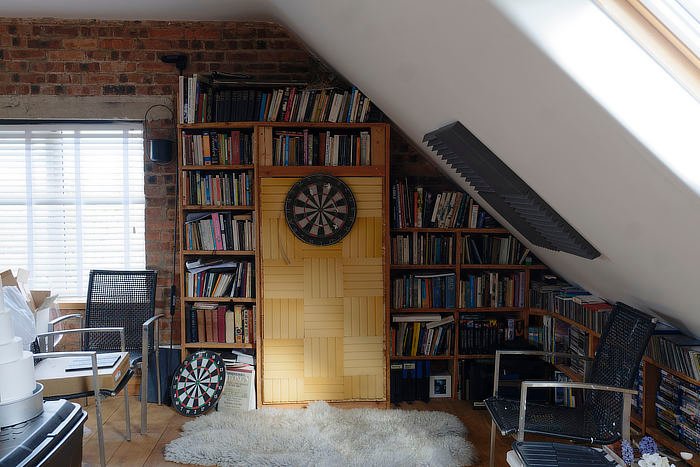
Here’s the same scene shot with the forty year-old Olympus 35mm Shift in the same position::
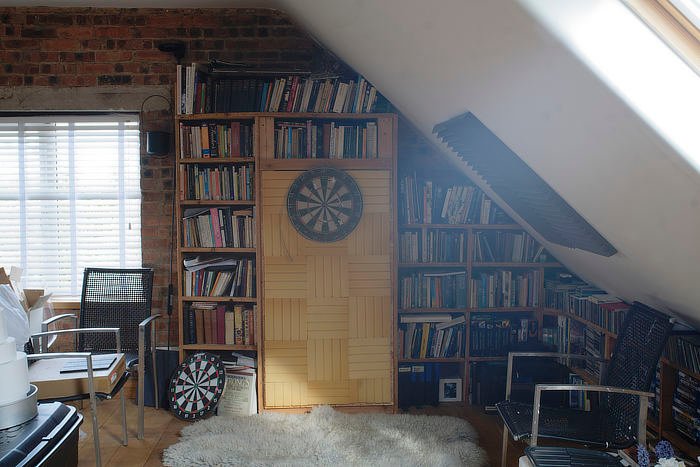
Which is why vintage photographers needed lens hoods. Here’s the same setup with a shallow metal shade. A hat, hand or lens cap works just as well:
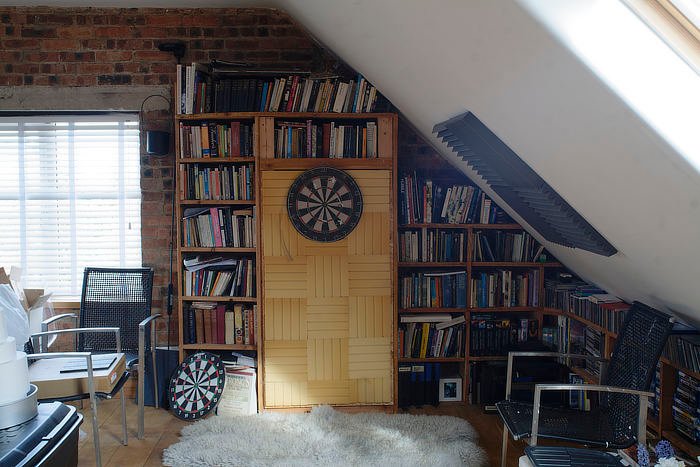
This lens has a poor reputation for handling cross-light, so this result is expected. How does the similarly antiquated Pentax 645 A SMC handle the same situation?
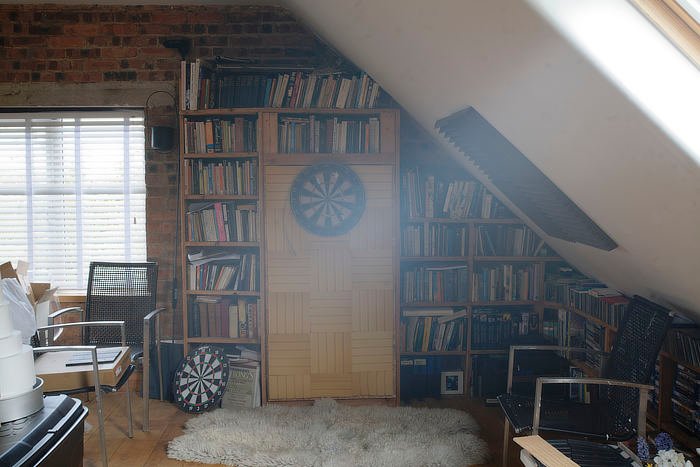
Rather worse. Veiling flare is more widespread and intrusive. The exact nature of upgrades made to the autofocus FA version of this lens is uncertain, but it’s sensible to assume that coatings were improved. You’ll see shortly the visual difference between them. We’d therefore expect the FA35 to handle this common shooting situation with less difficulty . . .
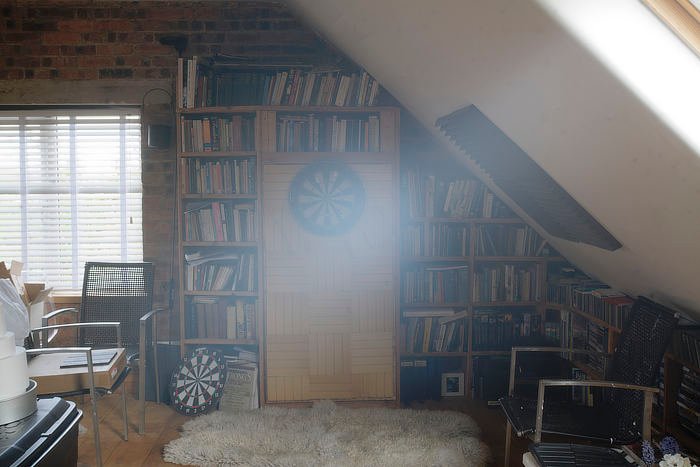
But it’s even more problematic – the worst of the group. In each Pentax 645 test shot, perfect results were achieved by shading the lens, or using a hood, establishing that the problem here is light entering the front of the lens, not issues relating to adaptation.
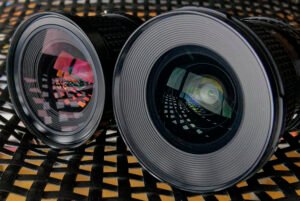 How can a newer lens flare more destructively than an older one? Well, the coating wasn’t the only design change. Doubtless Pentax’ blue/green coatings of the 1990s are more effective than the red/purple SMC coatings of the 1980s, but note a crucial element of the redesign – a bulbous one: the nine-element SMC Pentax-A has an unusually flat, thin front element, but the ten-element Pentax-FA’s has a bulky, convex front element more susceptible to raking flare. Pentax bundled a large (compulsory) petal hood with the FA, but the A is more commonly seen bare, and was never officially sold with one. It’s therefore something of a moot point that the FA is inherently more vulnerable: properly shaded, they perform similarly; left exposed, both are problematic.
How can a newer lens flare more destructively than an older one? Well, the coating wasn’t the only design change. Doubtless Pentax’ blue/green coatings of the 1990s are more effective than the red/purple SMC coatings of the 1980s, but note a crucial element of the redesign – a bulbous one: the nine-element SMC Pentax-A has an unusually flat, thin front element, but the ten-element Pentax-FA’s has a bulky, convex front element more susceptible to raking flare. Pentax bundled a large (compulsory) petal hood with the FA, but the A is more commonly seen bare, and was never officially sold with one. It’s therefore something of a moot point that the FA is inherently more vulnerable: properly shaded, they perform similarly; left exposed, both are problematic.
 |
Direct Light
Flare and internal reflections (ghosting) affects all lenses to some extent. Here we provoke each lens with an in-frame point light source:
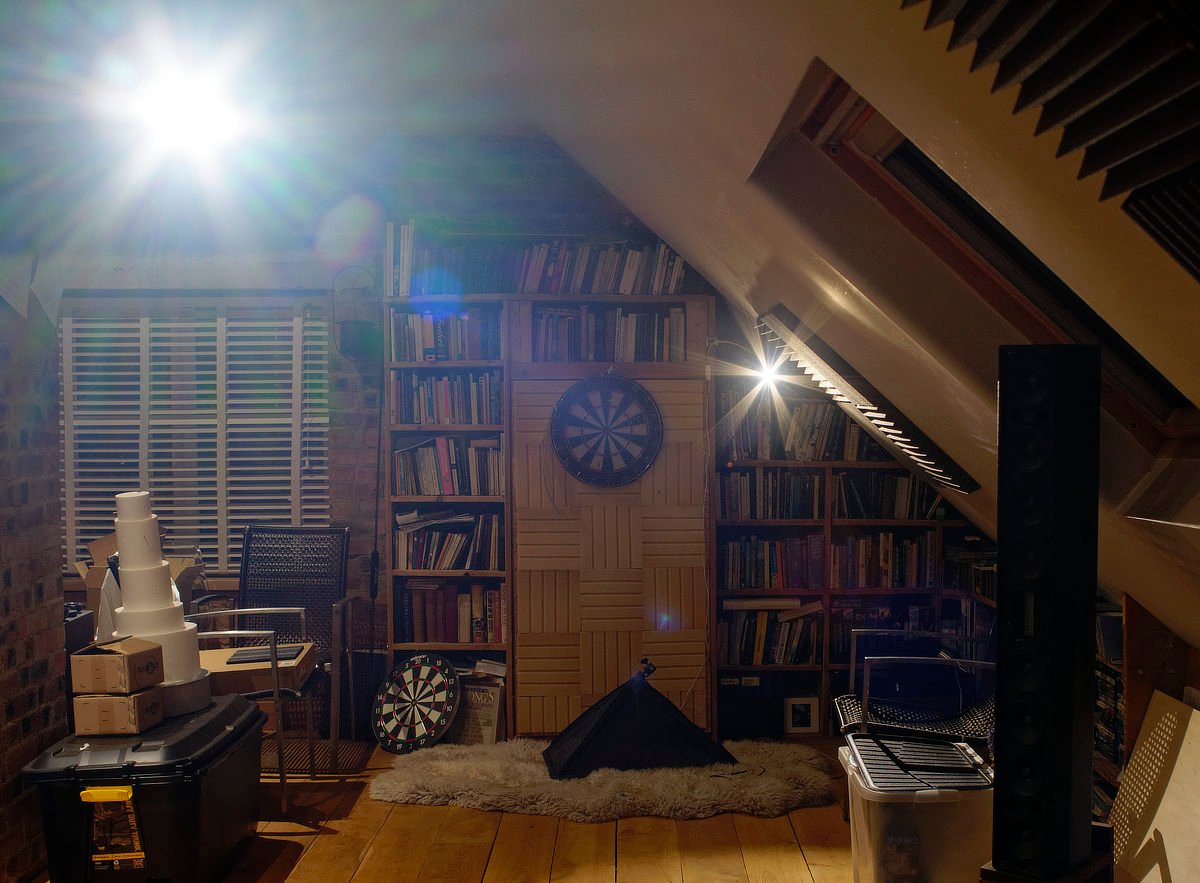
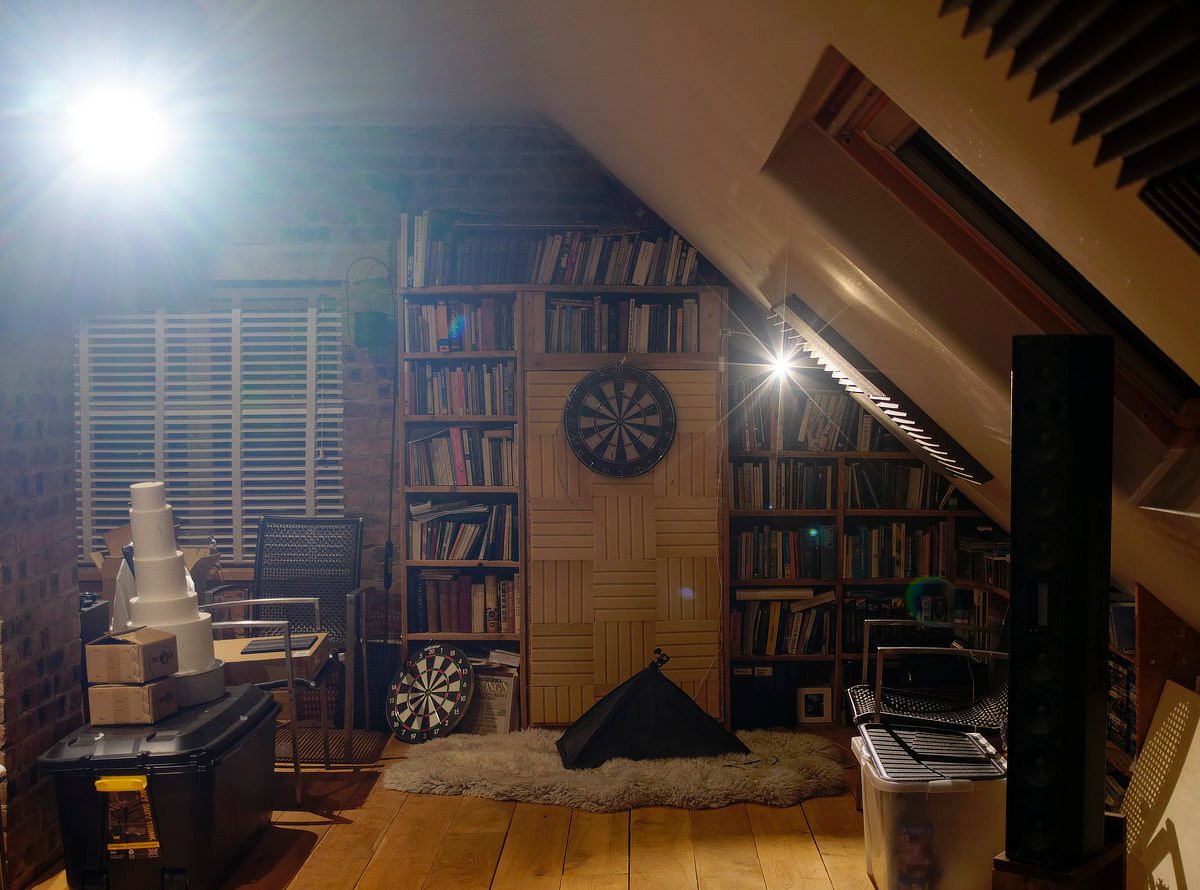
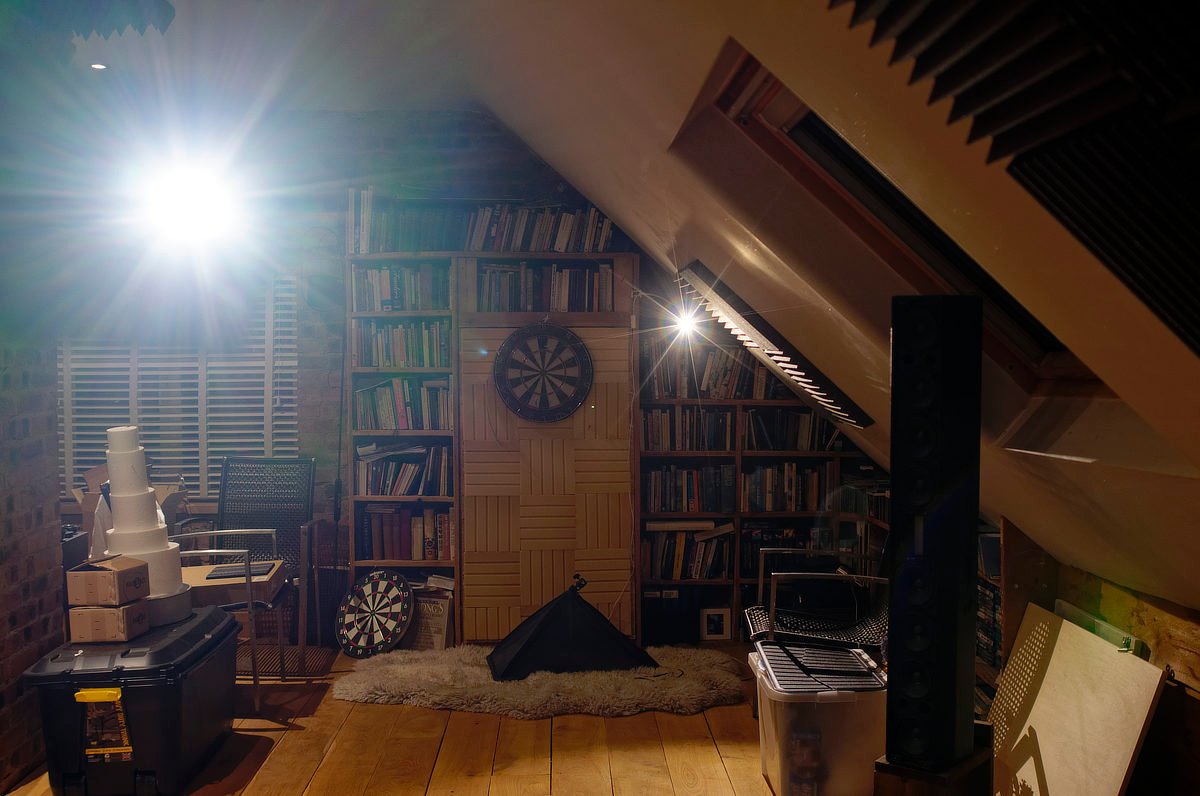
None of these lenses have great flare control: but they have different rendering styles: the Olympus tends to cluster mixed ghosts around the light source, which is poorly rendered, wherease both Pentax lenses look a bit more controlled. The FA likes to surprise with large, pale, green ghosts on the opposite edge of the frame. As we’ve introduced some sunstars, let’s zoom in on them at different apertures:
Olympus 35/2.8 PC: Sunstars
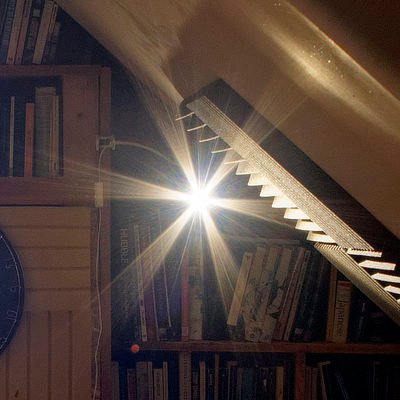
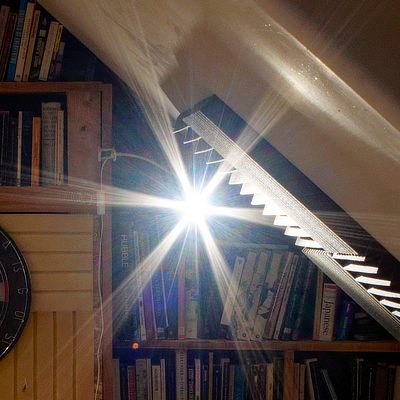
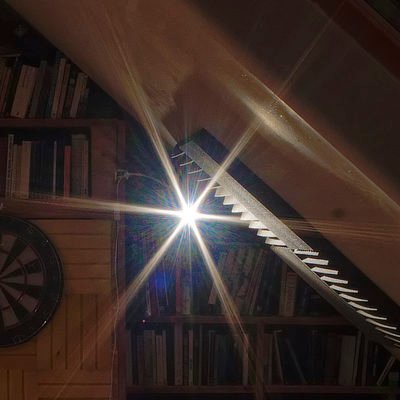
The Olympus’ six-blade diaphragm develops sunstars late and ugly: messy, striated fans at f8 and wider that don’t resolve into tidy points even at f22. Note, too, the blue ghosts.
Pentax A SMC 35/3.5: Sunstars
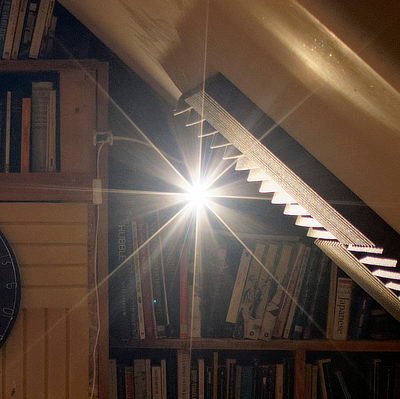


The original Pentax 35/3.5 scores over the Olympus with a better-made eight-blade diaphragm that renders a hazy star of sorts at f5.6, but from f11 has textbook, fine-spoked, tapering stars with well-controlled halation.
Pentax FA 35/5.5: Sunstars
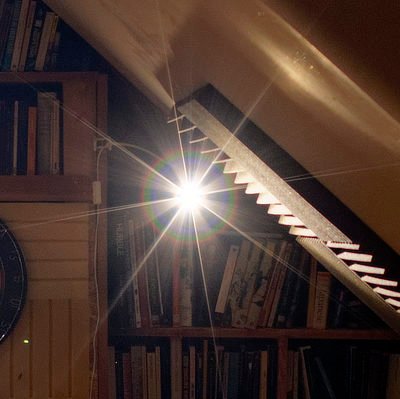

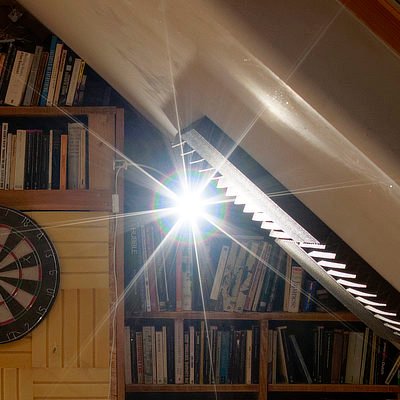
Whether or not you approve of the bonus prismatic halo punctuating the FA35’s stars, it’s beyond dispute that it renders the cleanest, prettiest point light sources of this group. It’s rather valuable to low-light shooters to have stars this clean at apertures as wide as f5.6. Excellent performance here.

Summary
The most modern lens of this group (the Pentax 645 FA 35/3.5) has the best coatings: we see that from the controlled rendition of point light sources. But it’s also the most complex, and it has a bulbous front element prone to catching stray light, and this often creates large green artefacts. However it delivers the most attractive sunstars by far.
The lens it superceded (the A SMC 35/3.5) is differently flare-prone: it has a bigger problem with veiling flare than either the Olympus or the FA35, but it has better control over internal reflections than either, and handles point light sources the most gracefully, without major ghosting, and still delivers serviceable sunstars at wide apertures.
The Olympus is a handful in tricky lighting conditions: somewhat prone to veiling flare – much more than a modern lens, though respectable for its period – and all manner of trouble when dealing with dark, point-lit scenarios. Its sunstars are downright ugly and they only kick in at apertures when the lens (any lens) is compromised re: pixel-level sharpness.
There isn’t really a winner here: I’ve enjoyed using the Pentax 645 for night-time architectural photography, but there have been times when those green ghosts bit my backside. The Olympus, with a hood is OK if used with care in the daytime, but not recommended for shooting after dark. The SMC – with a really good, big hood – is probably the least troublesome overall, but all these lenses have issues you need to be mindful of, and work around.
